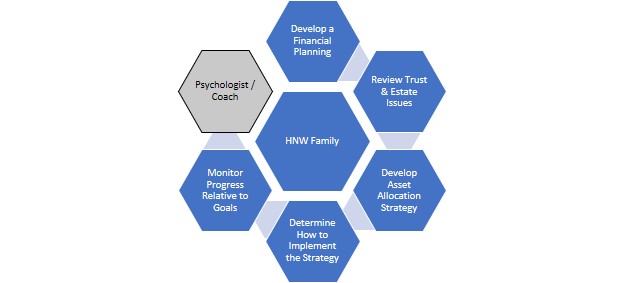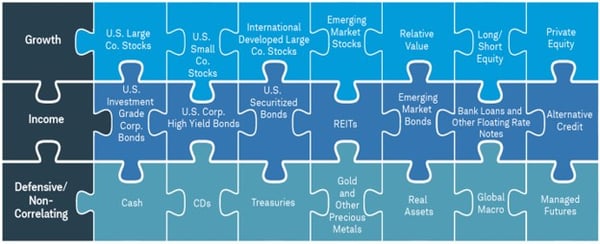 - Tony Davidow
- Tony Davidow
"With recent volatility associated with the Coronavirus, it’s worth revisiting how we can help clients in navigating these turbulent times. The temptation for many investors is to go to the sidelines when things get difficult. But fear is not a strategy – it’s an irrational reaction to uncertainty."

The last couple of weeks have felt like a roller coaster for many investors. Everyone says they’re a long-term investor, and can stomach market volatility, until it occurs – then they’re tempted to head for the exits. The challenge of course is if they head for the exits now – will you be able to get them back in the markets at precisely the right time in the future. The value of the advisor is never more important than in periods of volatility and uncertainty.
The markets around the globe are reacting to uncertainty about the magnitude of Coronavirus. I will leave the discussion of the virus itself to the experts – but suggest that advisors provide a critical role in helping clients work through the noise, and focus on how this impacts their portfolios.
It’s worth noting that coming into the new year, many strategists were concerned about valuations and the level of complacency permeating the markets. The markets shrugged off those concerns, and two weeks ago reached an all-time high. Last week, fears of a pandemic rose dramatically, and cases of Coronaviruses were reported around the globe. Not surprisingly, the U.S. markets reached correction territory (down 10%) – with no relief in sight.
The balance in communicating information is being transparent without evoking fear. We’re trying to get our arms around the impact on the supply chain, the change in behavior based on the concerns, and any coordinated Government action to calm the markets. Undoubtedly, this will be a big story for many months to come.
Back to Basics
Market volatility often presents an opportunity to revisit the Consulting Process to see if there have been any substantive changes in your client’s circumstances. It also shows your clients that you care and are focused on addressing their needs. It’s preferable to periodically revisit some of the issues below regardless of the market environment.
- How have your client’s done relative to their goals and objectives?
- Have there been any changes in your client’s cash flow needs?
- Do you need to make any adjustments in asset allocation to better align with your client’s risk-tolerance or time horizon?
- Do you need to make changes with third-party managers (replace or change allocation)?
- Are there new investments that warrant consideration (defensive assets, alternative investments, options, etc.)?
The Consulting Process

Perhaps the greatest value of an advisor is serving as a psychologist / coach. Helping clients make rational decisions and avoid emotional responses. Understanding what they mean – not just what they say. Helping clients through behavioral biases that we all know exist.
Investors often exhibit a herd mentality. They tend to chase what’s hot. Investors are eager buy the hot stock, manager or fund – regardless of underlying fundamentals. An example of this would be meteoric rise of the FANG stocks (Facebook, Amazon, Netflix & Google) regardless of underlying fundamentals. We’ve also experienced a dramatic outperformance of growth relative to value over the last decade. Have your clients taken on too much risk by following the herd?
As an industry, we use a lot of jargon and terminology that can be confusing to investors. In our attempt to be diligent, we will often overwhelm investors with too much information – and too many choices. Paralysis analysis describes this phenomena and the common reaction – they often do nothing. We must do a better job in describing how investments work and why they should be added to their portfolios1.
Daniel Kahneman noted in his book Thinking, Fast and Slow, “The concept of loss aversion is certainly the most significant contribution of psychology to behavioral economics.2” He noted that investors would go to great lengths to avoid losses verses seeking gains. This is precisely the challenge that we are facing investors today. investors don’t want to feel the pain of losses.
What to do now?
Rather than bailing on the markets all together, wouldn’t it be more prudent to recognize how investors are feeling, and respond in a measured fashion. First and foremost, I think it’s imperative that advisors reach out to their clients to take their pulse. Use the opportunity to assess their concerns and be prepared to recommend subtle changes in their allocation and portfolios if appropriate. You may want to consider the market volatility check list below:
- Review investors risk-tolerance – if investors are fretting the market environment, they may be exposed to too much risk. You may want to consider de-risking the portfolio.
- Review investors asset allocation – with strong equity returns, allocations may be misaligned with investors long-term allocation targets. Re-balancing may be appropriate.
- Review underlying investments – make sure that each investment is fulfilling their goal in the portfolio, and that collectively the risk-profile is appropriate given the client’s goals and objectives.
- Consider tax-management strategies – this may be an appropriate time to introduce some tax-loss harvesting strategies. You don’t need to wait until year-end to consider tax implications.
- Consider tactical shifts – you may want to consider certain short-term moves to better positions to weather the storm. You can increase allocations to defensive assets like cash or gold – or introduce new strategies to buffer volatility.
The Role of Various Asset Classes
 Market volatility presents an opportunity to demonstrate your value. Your role as a psychologist / coach is of critical importance as you keep your client’s focused on achieving their long-term goals and objectives. Investors natural tendency is to react in an emotional irrational manner.
Market volatility presents an opportunity to demonstrate your value. Your role as a psychologist / coach is of critical importance as you keep your client’s focused on achieving their long-term goals and objectives. Investors natural tendency is to react in an emotional irrational manner.
"We must all work towards protecting clients from themselves – resisting the temptation to do the wrong thing, at the wrong time, for the wrong reason."
1 Davidow, Anthony, “Alternative Investments: A Goals-Based Framework”, Investments & Wealth Monitor, January / February 2018
2 Kahneman, Daniel, “Thinking, Fast and Slow”, Farrar, Strauss and Giroux, 2011


